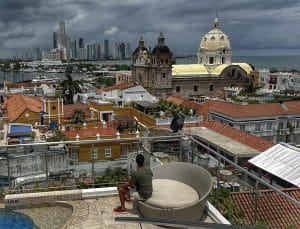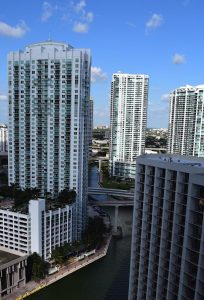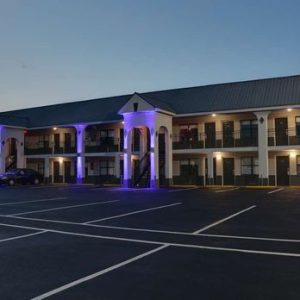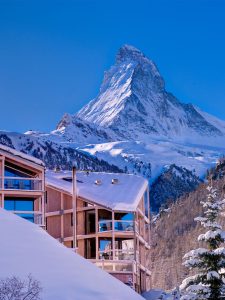Welcome to Hosteliest, your dependable resource for all things travel and hotels. In this particular article, we dive deep into understanding the earthquake P-wave and S-wave travel time worksheet answers. Join us as we explore the fascinating world of geological phenomena and its impact on travel.
Title: Deciphering Earthquake P Waves and S Waves Through Travel Time Worksheets
Hello, our adventurous reader! Are you fascinated by the unpredictable yet intriguing phenomenon of earthquakes? Perhaps you’re asking yourself, “What are these strange terms – P waves and S waves? And what on earth is an earthquake P wave and S wave travel time worksheet?” Fear not, for your curiosities shall be put to rest in this article.
Understanding P waves and S waves
First, let’s demystify these terms. P waves (Primary waves) and S waves (Secondary waves) are vibrations that travel through the Earth when an earthquake occurs. These two types of waves have different properties and travel at different speeds. This speed difference is important to scientists, helping them locate the quake’s epicenter.
Decoding the Travel Time Worksheet
Now, let’s dive into our main topic for today – the earthquake P wave and S wave travel time worksheet answers. This is a tool used to study and calculate the travel times of P and S waves. The data from these worksheets make it possible to detect the location and the magnitude of an earthquake, crucial information for geologists and seismologists alike.
A Brief Overview of the Worksheet
Most worksheets will offer data of a hypothetical earthquake, including the arrival times of both P and S waves at multiple seismograph stations. Before you get into calculating travel times or distances, remember this key rule: P waves always arrive before S waves.
To find the travel time, subtract the arrival time of the P wave from the arrival time of the S wave at the same station.
Time to Get Hands-on!
Let’s use this formula on a simple example. If a worksheet tells you that the P wave arrives at 3:00 pm and the S wave at 3:07 pm, subtract the arrival time of the P wave from that of the S wave, giving you seven minutes. This is the lag time or ‘difference in arrival’ time.
From here, you can use a graph or chart (usually provided in most worksheets) relating lag time to distance from the epicenter, allowing you to determine the approximate distance to the earthquake’s epicenter!
Recap and Summary
Understanding the fundamentals of earthquake P waves and S waves, along with how they relate to each other in terms of travel times, can provide valuable insights into the nature of earthquakes. The travel time worksheet gives practical application to this knowledge, using real-world examples and data to locate an earthquake’s epicenter and estimate its magnitude.
The earthquake P wave and S wave travel time worksheet answers aid in making scientists’ and students’ understanding of earthquakes more comprehensive and hands-on. They bridge the gap between theoretical knowledge and real-world application, fostering a deeper understanding of our ever-dynamic planet Earth!
So, the next time an earthquake strikes, remember – it’s not just a terrifying shake but a scientific phenomenon that, thanks to tools like travel time worksheets, we are continually learning more about. Get your worksheet ready, because those P and S waves are coming – and now you’ll know what to do with them!
Understanding Earthquake P and S Wave Travel Time: A Comprehensive Guide for Travellers
Understanding Earthquake P and S Wave Travel Time: A Comprehensive Guide for Travellers
Earthquakes are natural occurrences that can have immense impacts on travel plans, especially when they occur in or near your holiday destination. It is important for travellers to gain a basic understanding of earthquake P (primary) and S (secondary) wave travel times, to make informed decisions during such events.
P and S Waves
The initial wave that travels from an earthquake is called the P (Primary) wave. It is the fastest moving wave, travelling through both solid rocks and liquid mediums. Immediately following the P wave is the S (Secondary) wave, which moves slower and is most responsible for the shaking felt during an earthquake.
Travel Time
One fundamental aspect to understand is the travel time of these waves. The P wave arrives first, while the S wave, being slower, arrives later. The difference in arrival time can help determine the distance to the epicentre of the earthquake. In practical terms, once you feel the P wave, you may have a small window of time before the more destructive S wave arrives.
How Does This Information Benefit Travellers?
Knowledge of P and S wave travel times can provide travellers with crucial moments to react and seek safety during an earthquake. This information is also beneficial when selecting travel insurance – some insurance carriers may cover adjustments to travel plans due to natural disasters, including earthquakes.
Additionally, hotel guests can use this information to evaluate a hotel’s earthquake preparedness. Travellers should ask whether hotels have early warning systems installed that can detect P waves. Such system provides valuable seconds for guests to take cover before the arrival of the S wave.
Conclusion
In conclusion, understanding earthquake P and S wave travel times is not just useful knowledge for scientists or seismologists – it’s a practical safety consideration for travellers too. By understanding this, travellers can ensure they are better prepared to react expediently and appropriately should they ever find themselves near an earthquake while travelling.
Understanding the Relationship Between Earthquake’s P and S waves and Hotel Structural Design
In seismic events, there are two types of body waves – primary or P waves and secondary or S waves. The difference in travel time between these two wave types can provide crucial information about the distance to the earthquake’s epicenter. Knowledge of this kind is essential in the field of hotel structural design to ensure the safety and security of both the guests and staff. Concrete buildings, most commonly seen in hotels, need to be designed to withstand the shocks caused by these seismic activities. This understanding is not only crucial for architects and builders but also for travellers keen on ensuring their safety during their stay.
The Significance of P and S Wave Travel Time Worksheet Answers for Hotel Site Selection
When choosing a location for a new hotel, many factors come into play – from accessibility and local attractions to seismic activity in the area. An understanding of P and S wave travel times is crucial in identifying seismic hotspots. By analyzing earthquake P wave and S wave travel time worksheet answers, hoteliers can make informed decisions regarding the selection of safe and suitable locations for their establishments. A site that has a history of massive seismic activities based on the study of the P and S wave worksheet may be less attractive as a hotel location.
Applying Earthquake’s P and S Waves Knowledge When Planning Travel Itineraries
For seasoned travelers and travel agencies, understanding earthquake’s P and S wave travel time can be very useful, especially when planning itineraries to earthquake-prone regions. Knowing the principles behind these seismic waves and how different structures respond to them can guide travellers in choosing safer accommodations. It’s always recommended to check the hotels’ safety measures against earthquakes. Therefore, knowing the science behind the worksheets isn’t only academically significant but also potentially life-saving information for travellers.
Frequently Asked Questions (FAQ)
How does the travel time of P-waves and S-waves during an earthquake affect the functioning of hotels and their precautionary measures?
During an earthquake, the travel time of P-waves (Primary waves) and S-waves (Secondary waves) can significantly affect not only the functioning but also the precautionary measures of hotels.
Earthquakes generate seismic waves that can cause severe damage to buildings and infrastructure, including hotels. The difference in arrival times of P-waves and S-waves is useful for determining the distance to an earthquake.
P-waves are the fastest seismic waves and the first to arrive at a given location, followed by S-waves. These waves can provide a brief warning period before the more destructive S-waves and surface waves hit. This period, called the P-wave warning time, could allow for certain precautionary measures to be activated within a hotel.
For instance, a hotel could install earthquake early warning systems (EEWS). These systems can detect the initial P-waves before the S-waves arrive. Once a rapid response has been made to the P-wave, necessary steps can be taken to protect guests and staff. Elevators can be programmed to stop at the nearest floor and open their doors, preventing passengers from being trapped. Gas supplies can be automatically shut off to lower the risk of fires. Alarms can also be triggered to alert everyone to take cover.
However, these systems require significant investment and maintenance, making them relatively rare in hotels unless situated in regions prone to frequent seismic activity.
Besides the technical solutions, hotels should conduct regular earthquake drills and have a clear evacuation plan in place. It’s crucial to have well-trained staff who can guide and assist guests during such crises.
In conclusion, while the travel time of P-waves and S-waves cannot prevent an earthquake, understanding and utilizing this interval can, however, enable better preparedness and potentially save lives in a hotel setting.
In the context of travel, how can understanding the difference between P-wave and S-wave travel times aid in preparing for potential earthquake scenarios?
Understanding the difference between P-wave (Primary) and S-wave (Secondary) can be vital in preparing for potential earthquake scenarios, specifically in locations known to be prone to seismic activity. But how does this relate to travel and staying in hotels?
P-waves are the first waves that arrive during an earthquake. These are fast, low-amplitude waves that often go unnoticed by people, but they can be detected by animals and special instruments called seismographs. The detection of a P-wave can serve as an early warning sign of an impending earthquake, allowing measures to be taken to ensure safety.
On the other hand, S-waves are slower but have higher amplitude and cause most of the shaking and damage during an earthquake. Understanding the gap between the arrival of P-waves and S-waves can provide a rough estimate of the distance to the earthquake’s epicenter.
As a traveler or a hotelier, understanding these signs can guide preparations for potential earthquakes. You can plan evacuation routes, emergency response procedures, and take necessary precautions when P-waves are detected. Hotels can inform their guests about these signs to help them stay safe during a possible earthquake.
Moreover, certain countries have advance earthquake warning systems based on P-wave detection. These systems send out alerts when P-waves are detected, giving people precious seconds to find a safe place before the more destructive S-waves arrive. When traveling or staying in seismic areas, it could be beneficial to be aware of such systems and understand how to respond to these alerts.
In summary, understanding P-wave and S-wave travel times is crucial in earthquake-prone regions as this knowledge can aid in creating safety plans and response mechanisms for both travelers and hotels.
How might knowledge of P-wave and S-wave travel times from an earthquake worksheet be useful for hoteliers in earthquake-prone regions?
Understanding P-wave (Primary wave) and S-wave (Secondary wave) travel times from an earthquake can be crucial for hoteliers in seismically active regions.
Early Warning Systems: By monitoring seismic activity, hotel operators can receive alerts when P-waves, which are faster yet less destructive, are detected. The gap between the arrival of the P-wave and the more damaging S-wave can provide precious seconds or even minutes to initiate safety procedures.
Building Design: Knowledge of seismic activity can also influence the design and construction of hotels. Buildings can be equipped with earthquake-resistant features to protect guests during an earthquake.
Emergency Preparedness: Hotels can use this information to develop and improve their emergency action plans. This may include conducting regular earthquake drills, equipping the building with necessary safety measures like easy exit routes, and training staff on what to do during and after an earthquake to ensure the safety and well-being of the guests.
Informed Decision Making: Understanding P-wave and S-wave travel times also allows hoteliers to make more informed decisions about where to locate their hotels, potentially steering clear of the most dangerous earthquake-prone zones.
In conclusion, understanding the travel times of P-waves and S-waves from an earthquake can significantly help hoteliers in earthquake-prone areas to ensure the safety of their guests, structure their buildings to withstand earthquakes and make informed decisions about hotel locations.
In conclusion, understanding the travel time of earthquake P waves and S waves is not just significant for seismologists but also for travelers. This information can be utilized to better comprehend and prepare for potential earthquake scenarios while staying at hotels in vulnerable areas. By referring to the spreadsheet provided, you should now have a clearer grasp of how these seismic waves function and their impact on your safety during travels. Remember, being aware and prepared is a critical aspect of responsible and safe travelling. Stay vigilant, stay safe – and let the journey continue!
Error: El post actual no se encuentra en el array de posts.























































































































